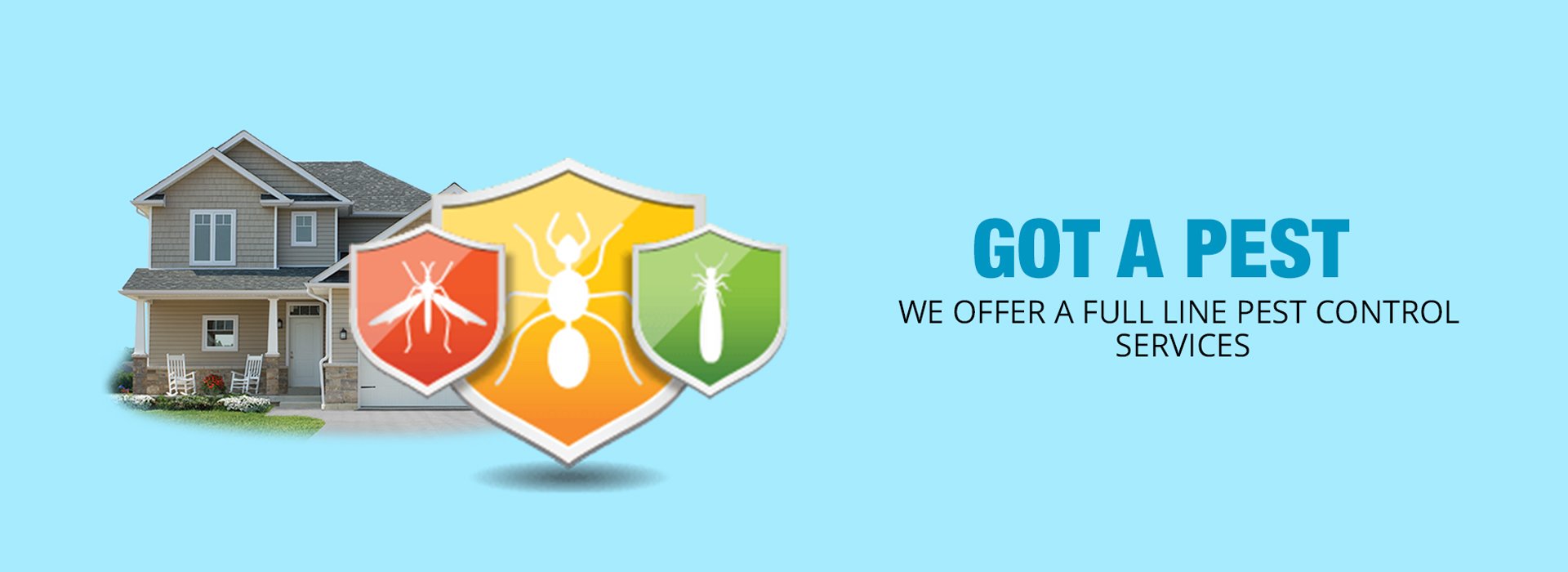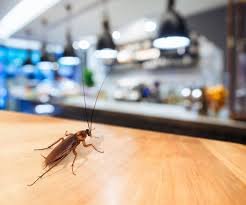Pre-Anti Termite
 If you are planning to build a house or develop your property for building your office, termite control is the first thing you should think of. We use highly professional and advanced techniques for treating the termite infestation problem. Direct liquid treatments are applied to the outside, inside and also in the foundation to eliminate the termites completely. Direct injection of liquid pesticide (termiticide) in areas like the foundation, within the foundation walls and also areas under the concrete slabs is part of our specialized termite control treatment plan.
If you are planning to build a house or develop your property for building your office, termite control is the first thing you should think of. We use highly professional and advanced techniques for treating the termite infestation problem. Direct liquid treatments are applied to the outside, inside and also in the foundation to eliminate the termites completely. Direct injection of liquid pesticide (termiticide) in areas like the foundation, within the foundation walls and also areas under the concrete slabs is part of our specialized termite control treatment plan.
- We treat the sides and the bottom surface of the foundation trenches and pits with a chemical to a height of about 30cm at the rate of 5 Lit. per square meter of surface area.
- Backfill earth on each side of all built up walls, which will be in immediate contact with the foundation, should be treated with the chemical at the rate of 7.5Lit. per linear meter of the vertical surface of the substructure, to a depth of 45cm and width of 15cm. The chemical shall be directed towards the masonry surfaces so that earth in contact with these surfaces is well treated with the chemical.
- Before laying the floor, treat the top surface of the consolidated earth within the plinth walls with the chemical at the rate of 5lit. per square meter. Ensure backfill against the foundation is treated to its full depth.
Builders should take care that any disruption of the barrier during later construction work (e.g. creation of gardens over the treated barrier), may lead to untreated gaps.
 If you are planning to build a house or develop your property for building your office, termite control is the first thing you should think of. We use highly professional and advanced techniques for treating the termite infestation problem. Direct liquid treatments are applied to the outside, inside and also in the foundation to eliminate the termites completely. Direct injection of liquid pesticide (termiticide) in areas like the foundation, within the foundation walls and also areas under the concrete slabs is part of our specialized termite control treatment plan.
If you are planning to build a house or develop your property for building your office, termite control is the first thing you should think of. We use highly professional and advanced techniques for treating the termite infestation problem. Direct liquid treatments are applied to the outside, inside and also in the foundation to eliminate the termites completely. Direct injection of liquid pesticide (termiticide) in areas like the foundation, within the foundation walls and also areas under the concrete slabs is part of our specialized termite control treatment plan.- We treat the sides and the bottom surface of the foundation trenches and pits with a chemical to a height of about 30cm at the rate of 5 Lit. per square meter of surface area.
- Backfill earth on each side of all built up walls, which will be in immediate contact with the foundation, should be treated with the chemical at the rate of 7.5Lit. per linear meter of the vertical surface of the substructure, to a depth of 45cm and width of 15cm. The chemical shall be directed towards the masonry surfaces so that earth in contact with these surfaces is well treated with the chemical.
- Before laying the floor, treat the top surface of the consolidated earth within the plinth walls with the chemical at the rate of 5lit. per square meter. Ensure backfill against the foundation is treated to its full depth.
Builders should take care that any disruption of the barrier during later construction work (e.g. creation of gardens over the treated barrier), may lead to untreated gaps.
Post Construction Anti-Termite Treatment (For Existing Buildings)
Treatment To Masonry Foundation (External Side)
- If there is loose soil around the walls of your building, we dig a shovel width trench close to the external wall of the building exposing the foundation wall surface up to a depth of 50cm.
- If there exists a concrete cover or masonry apron around the walls of your building, holes are drilled as close as possible to the plinth wall about 300mm (1ft) apart from each other. The insecticide is then poured so that it reaches the soil to eliminate the termites present there and to stop them from re-infesting. If your building is on pillars, the holes are drilled around the pillars and insecticide poured into the soil.
Treatment To Masonry Foundation (External Side)
- If there is loose soil around the walls of your building, we dig a shovel width trench close to the external wall of the building exposing the foundation wall surface up to a depth of 50cm.
- If there exists a concrete cover or masonry apron around the walls of your building, holes are drilled as close as possible to the plinth wall about 300mm (1ft) apart from each other. The insecticide is then poured so that it reaches the soil to eliminate the termites present there and to stop them from re-infesting. If your building is on pillars, the holes are drilled around the pillars and insecticide poured into the soil.
 If you are planning to build a house or develop your property for building your office, termite control is the first thing you should think of. We use highly professional and advanced techniques for treating the termite infestation problem. Direct liquid treatments are applied to the outside, inside and also in the foundation to eliminate the termites completely. Direct injection of liquid pesticide (termiticide) in areas like the foundation, within the foundation walls and also areas under the concrete slabs is part of our specialized termite control treatment plan.
If you are planning to build a house or develop your property for building your office, termite control is the first thing you should think of. We use highly professional and advanced techniques for treating the termite infestation problem. Direct liquid treatments are applied to the outside, inside and also in the foundation to eliminate the termites completely. Direct injection of liquid pesticide (termiticide) in areas like the foundation, within the foundation walls and also areas under the concrete slabs is part of our specialized termite control treatment plan.- We treat the sides and the bottom surface of the foundation trenches and pits with the chemical to a height of about 30cm at the rate of 5 Lit. per square meter of surface area.
- Backfill earth on each side of all built up walls, which will be in immediate contact with the foundation, should be treated with the chemical at the rate of 7.5Lit. per linear meter of the vertical surface of the substructure, to a depth of 45cm and width of 15cm. The chemical shall be directed towards the masonry surfaces so that earth in contact with these surfaces is well treated with the chemical.
- Before laying the floor, treat the top surface of the consolidated earth within the plinth walls with chemical at the rate of 5lit. per square meter. Ensure back fill against foundation is treated to its full depth.
Builders should take care that any disruption of the barrier during later construction work (e.g. creation of gardens over the treated barrier), may lead to untreated gaps.
Post Construction Anti-Termite Treatment (For Existing Buildings)
Treatment To Masonry Foundation (External Side)
- If there is loose soil around the walls of your building, we dig a shovel width trench close to the external wall of the building exposing the foundation wall surface upto a depth of 50cm.
- If there exists a concrete cover or masonry apron around the walls of your building, holes are drilled as close as possible to the plinth wall about 300mm (1ft) apart from each other. Insecticide is then poured, so that it reaches the soil to eliminate the termites present there and to stop them from re-infesting. If your building is on pillars, the holes are drilled around the pillars and insecticide poured into the soil.
Pre-Anti Termite
![Pre-Anti Termite]() Prakash Verma
February 02, 2019
Prakash Verma
February 02, 2019
Anti Termite Reticulation Piping system: Termite facts
 Did you know that subterranean termites can build up to 40 feet high mounds (termite colony). That is like a typical four-storeyed building.
Did you know that subterranean termites can build up to 40 feet high mounds (termite colony). That is like a typical four-storeyed building.
Naturally, termites are not a pest and their recycling of wood and other plant matter is of considerable ecological importance. It is only when they get into our house and start damaging its structure and wood; we consider them to be a pest.
Termites are sometimes called “white ants”, though they are not closely related to true ants. Two of the major types of termites are Drywood termites and Subterranean termites.
Dry wood termites live in dry, undecided wood like limbs of trees, utility poles, posts, and lumber. Dry wood termites do not require a lot of moisture which makes them live in dry places. They do not require constant contact with the soil for their survival like its Sub-terranean Cousin.
In a tropical country like India Sub-terranean termites are of more significance as they cause extensive damage. Subterranean termites are social insects which live in colonies in the ground. They build vertical tunnels that look like mud tubes (known as shelter tubes) above ground level in the search of food. Basically, any sort of wood can tempt Termites. Wood is made up of Cellulosic material which is the favorite food of Sub-terranean termites. Termites can also damage the material of organic origin with the cellulosic base such as paper, cardboard, fabric, furniture, etc. However, Subterranean termites are known for their voracious tendencies and can damage even non-cellulosic substances also in search of the food and shelter.
Termite Management
 Because subterranean termites will die if exposed to air for an extended period of time, therefore they need constant moisture source for their survival. The mud tunnels provide protection from the open air and direct sunlight, allowing workers to forage for the food. Subterranean termites can form runways in the form of tunnels through cracks in concrete. Therefore even RCC structures are not exempt from these termites.
Because subterranean termites will die if exposed to air for an extended period of time, therefore they need constant moisture source for their survival. The mud tunnels provide protection from the open air and direct sunlight, allowing workers to forage for the food. Subterranean termites can form runways in the form of tunnels through cracks in concrete. Therefore even RCC structures are not exempt from these termites.
We are specialist in two types of Termite Pest Control services: (i.e White ants treatment)
The basic purpose of creating a chemical barrier in the soil, along the building is interrupting the runways of termites that root through the termite colony in the soil. An essential component of any termite management programme is treating the floor by injecting extensively along the periphery of the building. Once a continuous barrier is created, they cannot safely return to their central colony nest through the chemically treated soil. It is an established fact that Termites are compelled to return every few days to their central colony nest in the ground to obtain moisture essential for their survival and to feed and groom the nymphs (young termites), the king, queen and other members of the colony.
Thus the successful installation of a chemical barrier into the soil requires a lot of expertise and specialized equipment to form a complete and continuous barrier to protect the premises from a termite entry and future infestation.
If you detect a termite shelter tube or any other form of Termite infestation it is better to go for a solution by a professional pest control company than to handle it on your own.
Anti Termite Reticulation Piping system
![Anti Termite Reticulation Piping system]() Prakash Verma
February 02, 2019
Prakash Verma
February 02, 2019
Garden Pest Control
 It is important to check your vegetables for pests on a regular basis. A small clump of aphids on your broad beans is nothing to worry about (a healthy plant will shrug off the pests as we might deal with a cold), but if it becomes an infestation, you need to remove it. Simply rub the aphids off the plants with your fingers, or blast them with a jet from your hose. If the infestation is only small, leave it there. Predators will soon hone in on the pests and lay their eggs. For example, lacewing and ladybird larvae can eat as many as 150 aphids per day and produce new generations to control your pests next year.
It is important to check your vegetables for pests on a regular basis. A small clump of aphids on your broad beans is nothing to worry about (a healthy plant will shrug off the pests as we might deal with a cold), but if it becomes an infestation, you need to remove it. Simply rub the aphids off the plants with your fingers, or blast them with a jet from your hose. If the infestation is only small, leave it there. Predators will soon hone in on the pests and lay their eggs. For example, lacewing and ladybird larvae can eat as many as 150 aphids per day and produce new generations to control your pests next year.Prevention
The easiest way to prevent insect damage in your garden is to discourage them from coming in the first place. A healthy garden is the best defence.
- Pull out any weak plants. They may already be infected. If not, they will attract predators. Pull the plant and dispose of it away from the garden area.
- Build healthy, organic soil. Natural composting methods, mulching and top-dressing your soil with compost or natural fertilizer is the best way to develop strong, vigorous plants.
- Seaweed mulch or spray. Seaweed contains trace elements such as iron, zinc, barium, calcium, sulfur and magnesium, which promote healthy development in plants. Seaweed fertilizer in mulch or spray form will enhance growth and give plants the strength to withstand disease. Seaweed mulch also repels slugs.
- Minimize insect habitat. Clear garden area of debris and weeds which are breeding places for insects. Use clean mulch.
Treatment
The best way to maintain a healthy garden is to educate yourself and learn to identify common “bad bugs.” Inspect your garden regularly to detect problems early. The sooner a pest is identified the easier it will be to manage using earth-friendly methods. Below we’ve listed several garden invaders that you may encounter. Click on each pest picture for a description and our list of organic remedies.
Garden Pest Control
![Garden Pest Control]() Prakash Verma
February 02, 2019
Prakash Verma
February 02, 2019
Hello , This is Siya Killer pest control Pvt. ltd. (S.K.P.C)We do Pest Control Services In lower prices.
Contact Us :- 9599103924 9555975859
Visit us : www.siyakillerpestcontrol.com/ www.siyakillerpestcontrol.blogspot.com/ skpcindia.site123.me
Welcome to Siya Killer Pest Control,
Siya Killer Pest Control is a leading pest service provider in Cockroach, Bed Bug, Mosquito, Wood Borer, Termites, Bird nest protection and other general pest control service. We take pride in the fact that no one knows pests the way we do. Siya Killer Pest Control network and expertise is unparalleled. For serving precise needs of clients, we make the excellent use of latest pest control techniques & chemicals for their environment friendly aspects. We are committed in providing reliable solution for various pest infestations such as termites, cockroaches, rodents and bedbugs. We pay full attention to customers varied needs and designed our services for attaining maximal clientele satisfaction.
Termite Treatment through piping method/Termite tubing system also known as Pipe Reticulation system is a revolutionary system designed to effectively treat the area under concrete slabs or before flooring is done . It is system which is replenishable unlike older termite treatment methods.
Pest control is the regulation or management of a species defined as a pest, a member of the animal kingdom that impacts adversely on human activities. The human response depends on the importance of the damage done, and will range from tolerance, through deterrence and management, to attempts to completely eradicate the pest. Pest control measures may be performed as part of an integrated pest management strategy.
In agriculture, pests are kept at bay by cultural, chemical and biological means. Ploughing and cultivation of the soil before sowing reduces the pest burden and there is a modern trend to limit the use of pesticides as far as possible. This can be achieved by monitoring the crop, only applying insecticides when necessary, and by growing varieties and crops which are resistant to pests. Where possible, biological means are used, encouraging the natural enemies of the pests and introducing suitable predators or parasites.
In homes and urban environments, the pests are the rodents, birds, insects and other organisms that share the habitat with humans, and that feed on and spoil possessions. Control of these pests is attempted through exclusion, repulsion, physical removal or chemical means. Alternatively, various methods of biological control can be used including sterilisation programmes.
Contact Us :- 9599103924 9555975859
Visit us : www.siyakillerpestcontrol.com/ www.siyakillerpestcontrol.blogspot.com/ skpcindia.site123.me
How The Termite Attack On Our Home || Termite Animation mp4
 S.K. pest Control
January 20, 2019
S.K. pest Control
January 20, 2019
 S.K. pest Control
January 20, 2019
S.K. pest Control
January 20, 2019
COMMERCIAL PEST CONTROL
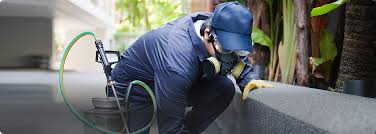
Commercial Pest Control:
Custom solutions for your business, your industry and your specific pest problems, including cockroaches, ants and spiders. Our environment friendly commercial pest control service effectively protects your business and reduces your footprint.
Our innovative pest management program for commercial premises comprises of following:
Initial audit of interior and exterior of premises for drawing up a pest control plan.
Identification of pest problem.
Identifying the sources of pest hideouts and their food sources.
Recommending corrective measures on sanitation and preventive measures.
Selecting target specific chemical treatment without harming environment.
Regular monitoring to evaluate the effectiveness of treatment and recommending necessary modification required.
No matter what kind of business you’re in, we have a solution for you.
We provide services in every filed like:
Offices
Buildings
Factories
Hospitals
Restaurants
Hotels / Motels
Ware House
School & College
Bank
Confectionary Shop
Theatre / Cinema Hall

Commercial Pest Control:
Custom solutions for your business, your industry and your specific pest problems, including cockroaches, ants and spiders. Our environment friendly commercial pest control service effectively protects your business and reduces your footprint.
Our innovative pest management program for commercial premises comprises of following:
Initial audit of interior and exterior of premises for drawing up a pest control plan.
Identification of pest problem.
Identifying the sources of pest hideouts and their food sources.
Recommending corrective measures on sanitation and preventive measures.
Selecting target specific chemical treatment without harming environment.
Regular monitoring to evaluate the effectiveness of treatment and recommending necessary modification required.
No matter what kind of business you’re in, we have a solution for you.
We provide services in every filed like:
Offices
Buildings
Factories
Hospitals
Restaurants
Hotels / Motels
Ware House
School & College
Bank
Confectionary Shop
Theatre / Cinema Hall
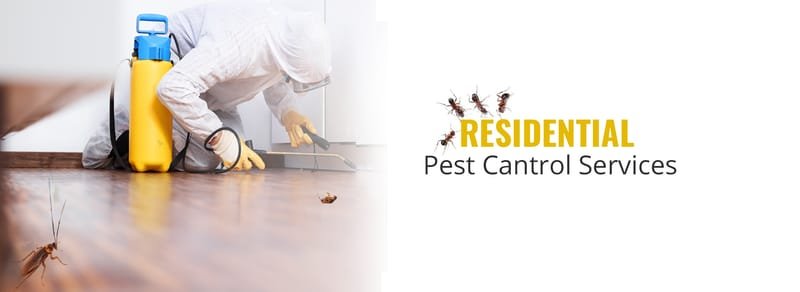
COMMERCIAL PEST CONTROL
![COMMERCIAL PEST CONTROL]() S.K. pest Control
November 24, 2018
S.K. pest Control
November 24, 2018
BED BUG CONTROL
ABOUT
Bed bugs are parasitic insects of the cimicid family that feed exclusively on blood. As you know, bed bugs have become a major concern. They’re making headlines in newspapers, magazines, TV, and radio. Bed bugs are hitchhikers and have no boundaries. They cross all social lines. The earlier an infestation is detected the easier and quicker it can be eliminated through effective bed bug treatment.
SKPC uses specialized inspection equipment to detect bed bugs even at the early stages of an infestation!

WHY THEY PRODUCE?
Bed Bug fecal and blood spots (look like rust) are left on sheets and pillowcases when the engorged bed bugs are crushed. These indicators serve as sure signs of infestation. Bed bugs prefer to hide in cracks and crevices during the daytime and come out to feed on the host’s blood at night, usually while the host is sleeping.
Since bed bugs can flatten their bodies, they fit in very small crevices, specially around the bed area. They are found in habitual hiding places, preferably close to a blood meal. Even though their preference is to be close they can travel several feet for a blood meal.
Since bed bugs can flatten their bodies, they fit in very small crevices, specially around the bed area. They are found in habitual hiding places, preferably close to a blood meal. Even though their preference is to be close they can travel several feet for a blood meal.
PRE-TREATMENT
Bed Bug Pre-treatment Procedures
Bed bugs
Reduce Clutter
Launder Infested Garments and Linens
Dismantle Bed Frames
Remove Dresser Drawers
Clean the Area
Caulk and Seal
Reduce Clutter
Launder Infested Garments and Linens
Dismantle Bed Frames
Remove Dresser Drawers
Clean the Area
Caulk and Seal
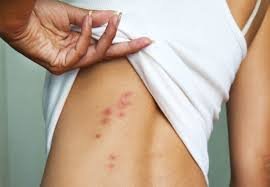
TREATMENT
Bed Bug focal and blood spots (look like rust) are left on sheets and pillowcases when the engorged bed bugs are crushed. These indicators serve as sure signs of infestation. Bed bugs prefer to hide in cracks and crevices during the daytime and come out to feed on the host’s blood at night, mostly while the host is sleeping.
Since bed bugs can flatten their bodies, they fit in very small crevices, especially around the bed area. They are easily found in their habitual hiding places, preferably close to a blood meal. Even though their preference is to be close they can travel several feet for a blood meal.
Since bed bugs can flatten their bodies, they fit in very small crevices, especially around the bed area. They are easily found in their habitual hiding places, preferably close to a blood meal. Even though their preference is to be close they can travel several feet for a blood meal.
BED BUG TREATMENT PROCEDURE
Spray liquid insecticides or aerosols:
Spray around the inside of closets, door frames and doors.
Spray moulding at the top and bottom of the room.
Spray around windows.
Spray seams of drawers, both top and bottom.
Spray dressers from below.
Spray where dressers touch the floor.
Spray where the bed touches the floor, spray chairs and underneath chairs.
Spray around the inside of closets, door frames and doors.
Spray moulding at the top and bottom of the room.
Spray around windows.
Spray seams of drawers, both top and bottom.
Spray dressers from below.
Spray where dressers touch the floor.
Spray where the bed touches the floor, spray chairs and underneath chairs.
BED BUG CONTROL
 S.K. pest Control
November 24, 2018
S.K. pest Control
November 24, 2018
 S.K. pest Control
November 24, 2018
S.K. pest Control
November 24, 2018

